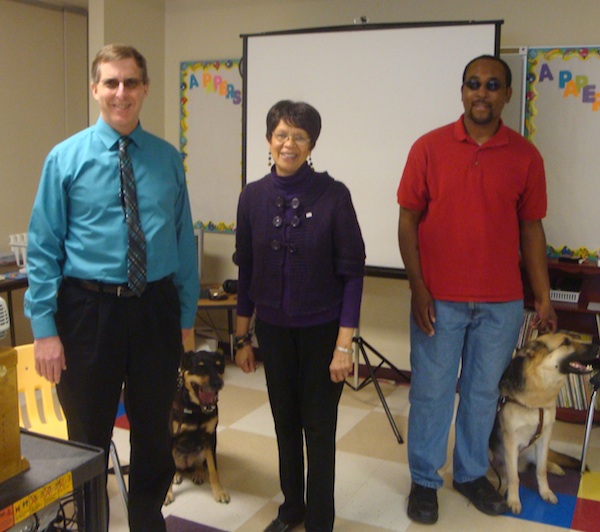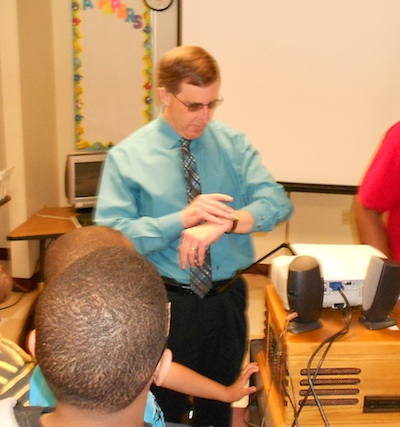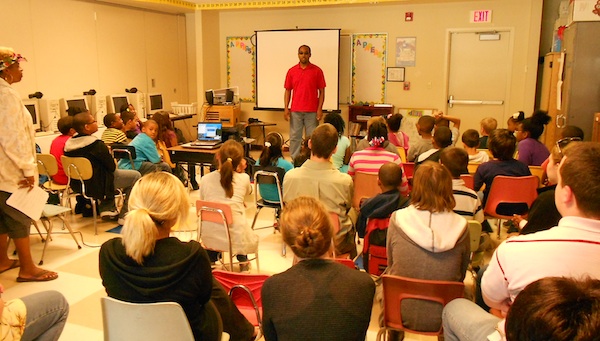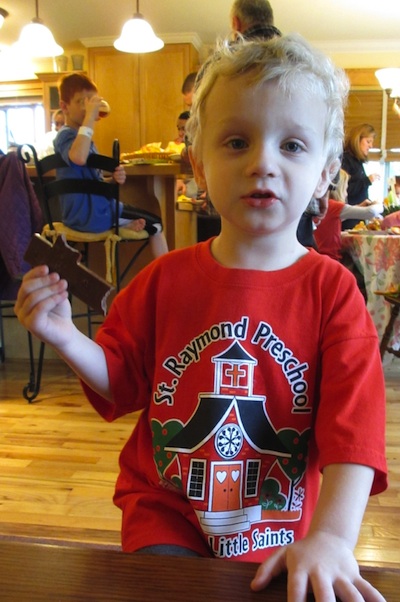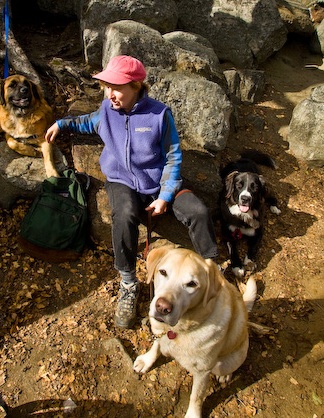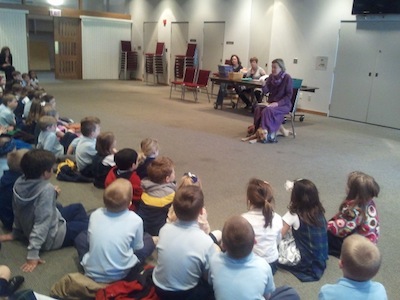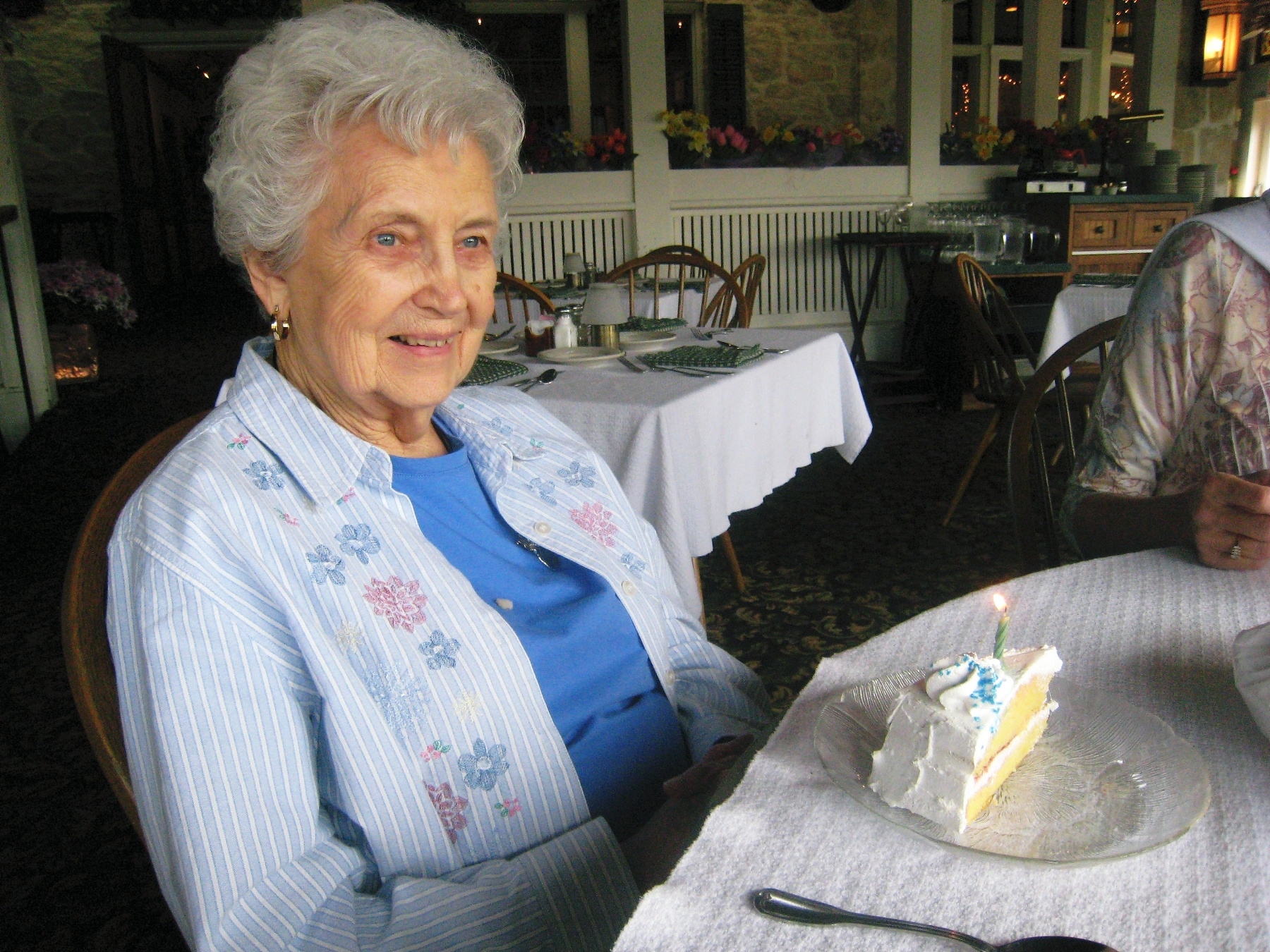A ray of hope
April 12, 2012 • 9 Comments • Posted in blindness, Uncategorized, writingYou might remember my friend Lauren Bishop-Weidner from a post I wrote two years ago. That post linked to a thoughtful and honest essay Lauren wrote for Two Hawks Quarterly about what it’s like to be able to see and love and live with someone who can’t. That piece was called On His Blindness; the “his” refers to Lauren’s husband Tom, who is Professor of Athletic Training and chair of the School of Physical Education, Sport, and Exercise Science at Ball State University. Whitney and I had the privilege of sharing the stage virtually with Dr. Weidner and Carlos Taylor, Adaptive Computer Technology Specialist at Ball State, along with their guide dogs Cate and Dutch, for a very special program in Muncie last Monday. Lauren agreed to write a guest post about that visit.
Motivate our Minds
by Lauren Bishop-weidner
Muncie, Ind., known primarily for canning jars and David Letterman, is also home to Motivate Our Minds (MOM), an after-school educational enrichment program that serves up a regular smorgasbord of learning opportunities for about 300 smart, curious, active kids in grades 1-8.
Thanks to the innovative spirits and creative minds of teachers and volunteers who love learning and kids, MOM is fun. Really fun. The kids get a healthy snack and individual help with homework. They go places, do things. They till, plant, tend, and harvest a garden, then sell the produce at a local farmer’s market. They grow to embrace learning, even if it means enduring school.
I got involved with MOM when I gave my freshman composition class an assignment to spend at least 8 hours volunteering locally in some capacity, then write about the experience. It was sort of a rough introduction to the idea of primary research, field work, that sort of thing. I asked MOM founder Mary Dollison to guest lecture in my class as a pathway to my students’ assignment, and the rest is history: I volunteer to tutor at MOM from time to time, and I look forward to reading to the 2nd and 3rd graders every Wednesday.
Motivate Our Minds has a long and proud history in Muncie. The brainchild of Mary Dollison and Raushanah Shabazz, the program began in 1987 as a summer reading program in the Dollison living room. The two women, both with full time jobs and families, were concerned about the children in Muncie’s low-income neighborhoods. The kids didn’t read, and too many didn’t finish high school. Armed with enthusiasm and determination to share their love of learning, they rounded up 16 neighborhood kids, including their own, and their home-based summer program outgrew its space within weeks.
Through tireless grant-writing, fundraising, and grassroots activism, MOM found a permanent home by 1993. Now serving nearly 300 students, MOM is a model of community advocacy, well known throughout east central Indiana for its effectiveness.
The kids in the program learn to value learning, and they learn to value themselves. The results are life-changing. And hey, who knows how many of their lives might be changed after the special day they had last Monday?! Beth graciously agreed to participate with my husband Tom Weidner and our friend Carlos Taylor in a special program for the kids of Motivate Our Minds. We had Beth and Whitney via Skype; Tom and Carlos with their dogs (Cate and Dutch); 32 kids; and several gawking adults.
Carlos read a Braille version of Safe & Sound to the kids, and they marveled when Tom showed them how he pops open the lid on his watch to find
out what time it is: he feels the hour and minute hands. “Cool!”
Beth could only be there via Skype, but I was impressed with how well she managed to connect through the impersonal computer not even video — just her happy voice through speakers. While the other kids took turns petting Kate and Dutch (their harnesses had been taken off, of course) one inquisitive boy walked up to the blank computer screen to ask Beth a question. “Where you at?” he wondered. For all we hear about how kids have to be entertained by saturating all their senses and keeping them in constant motion, these three professionals and their dogs connected with a lively roomful of active young minds in a low-tech (sort of) way.
The three of them gave a face to “disability” that these particular children, most of them from low-income homes and many from deep poverty, don’t get to see very often. A disability to them usually means perpetuating the poverty. Tom and Cate, Carlos and Dutch, and Beth and Whitney shined a ray of hope, infused with humor and fun. Watching the six of them interact with 32 excited children is an experience that I cherish.
